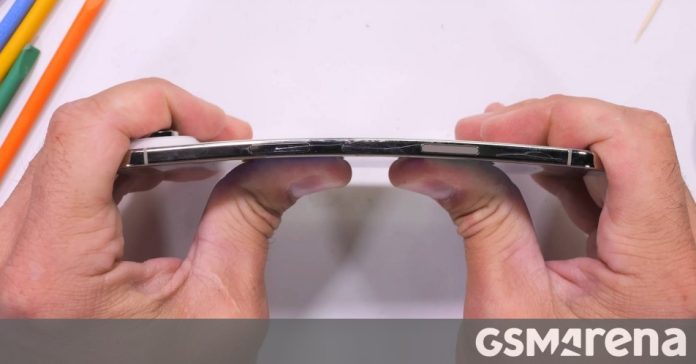The iPhone Air is the last model that Apple still makes with a titanium frame – this year, the Pros switched to aluminum, just like the vanilla model (singular now that the Plus is gone). Why?
Durability is a major concern with a device that measures only 5.6mm thick, especially with a large 6.5” display on the front. That display is where JerryRigEverything’s durability tests start.

The new Ceramic Shield 2 is 3x harder to scratch, according to Apple. According to EU’s new Energy label, it is a 5 on the Mohs scale, up from a 4 on the previous Ceramic Shield. Does that mean that the display scratches above level 5? As you can see in the test below, the level 6 and level 7 picks barely leave noticeable scratches on the new glass. Well done Apple – or rather well done Corning!
Okay, we’re all here to see one thing – will the slender phone fold like a paper napkin? Despite what you see below, the answer is “no”. The iPhone Air proved quite rigid and resisted Zack’s attempts to bend it by hand. The poster for the YouTube video is the result of the destructive science that Zack loves to do – he finds out just how much force is needed to actually bend the Air. The answer can be summed up as “a lot”.
Samsung used aluminum for its Galaxy S25 Edge – this one is a bit thicker than the Air at 5.8mm, but has a larger 6.5” display. Check out Zack’s video on the Edge to see whether it survives the bend test too.
We have an iPhone Air in for review and have already posted benchmarks and camera samples from the phone – check them out. An in-depth review is on the way too, coming soon.
Source
Apple iPhone 17 Air
#iPhone #Air #bend #test #Apples #slender #5.6mm #phone #survive

